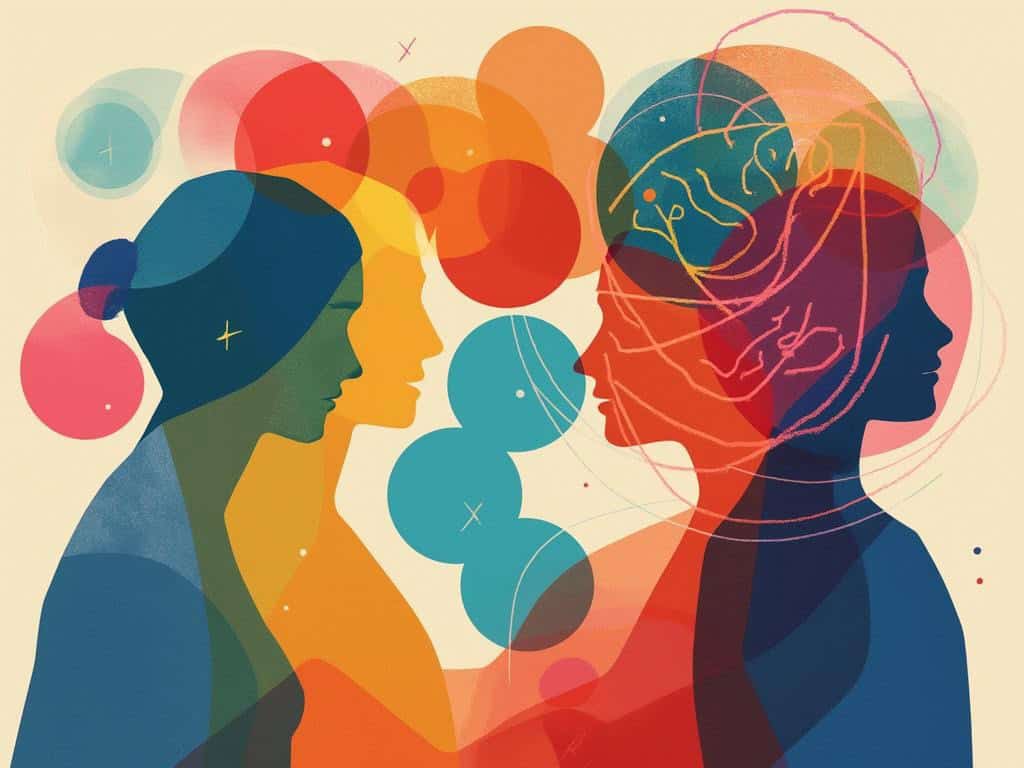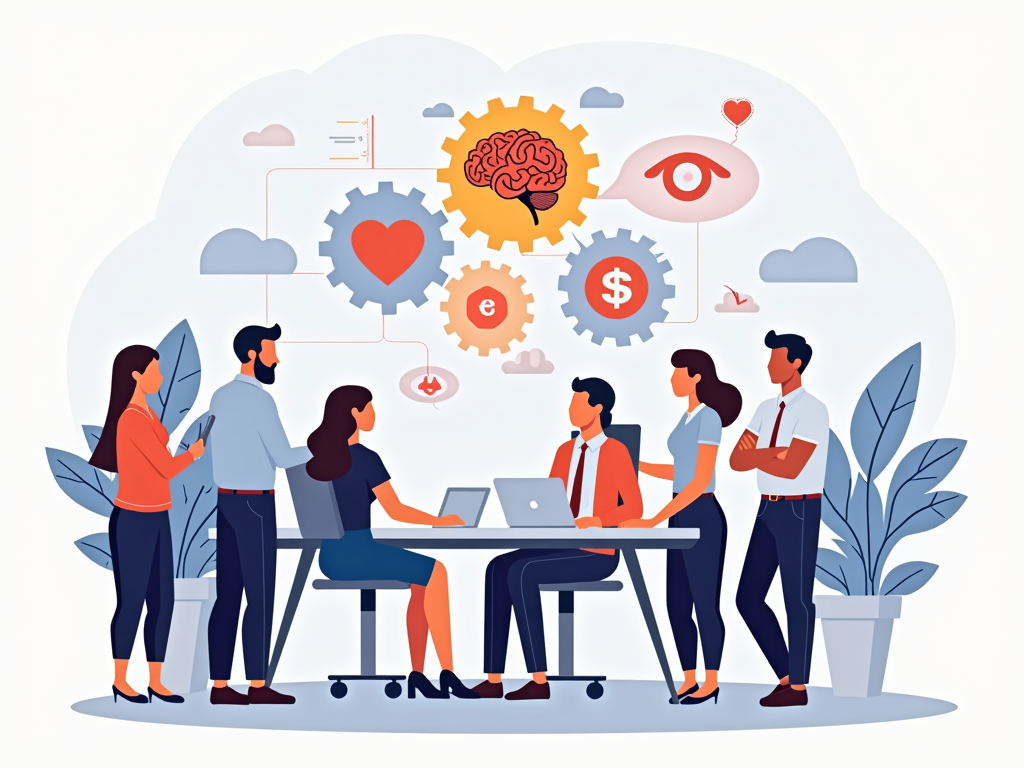
The EQ-i 2.0: A Comprehensive Assessment Tool for Emotional Intelligence
The EQ-i 2.0 stands as a cutting-edge assessment tool offering a thorough framework that measures emotional intelligence across five fundamental composite areas and 15 specific competencies. Drawing from over 25 years of research, this tool delivers practical insights that have established it as the industry standard for evaluating emotional intelligence in professional environments. Organizations can use the EQ-i 2.0 to improve leadership development, strengthen team dynamics, and boost individual performance.
Key Takeaways:
- The EQ-i 2.0 measures emotional intelligence through five composite areas: Self-Perception, Self-Expression, Interpersonal, Decision-Making, and Stress Management
- The assessment takes 15-20 minutes to complete and evaluates 133 statements to provide a detailed emotional intelligence profile
- Organizations can access multiple reporting options, including Workplace, Leadership, and Group Reports
- The tool helps identify potential burnout risks and provides targeted development recommendations
- Implementing the EQ-i 2.0 can lead to improvements in communication, conflict resolution, and team cohesion
Developed by emotional intelligence experts, the EQ-i 2.0 gives you accurate insights into how you perceive and express yourself, maintain social relationships, handle challenges, and manage stress. This assessment doesn’t just measure your current abilities—it highlights specific areas where you can grow.
The tool’s straightforward administration makes it accessible for organizations of all sizes. After completion, you’ll receive personalized feedback that connects your emotional intelligence profile to real workplace scenarios and outcomes.
Many high-performing companies now include emotional intelligence assessment as a standard part of their talent management strategy. Research consistently shows that emotionally intelligent employees adapt better to change, collaborate more effectively, and make more balanced decisions.
Your HR team can integrate the EQ-i 2.0 into existing development programs to create targeted coaching plans. The detailed reports allow for precise skill-building exercises that address specific emotional intelligence gaps identified in the assessment.
The most valuable aspect of the EQ-i 2.0 lies in its practical application to leadership development. Leaders who understand their emotional intelligence strengths and limitations create more psychologically safe environments, inspire greater trust, and drive better business results.
“The EQ-i 2.0 is a transformative tool that elevates emotional intelligence assessment, unlocking insights across five pivotal areas to foster leadership, enhance team dynamics, and boost individual performance. With over 25 years of research backing its comprehensive framework, this gold standard not only illuminates potential burnout risks but also paves the way for targeted development and improved organizational communication.”
Understanding Emotional Intelligence Measurement
The EQ-i 2.0 assessment offers a comprehensive framework to measure emotional intelligence through five composite areas and 15 specific competencies. This tool has revolutionized how organizations approach leadership development and team building. The EQ-i 2.0 provides actionable insights based on over 25 years of research, making it the gold standard for emotional intelligence evaluation in professional settings.
The Five Dimensions of the EQ-i 2.0
The EQ-i 2.0 breaks emotional intelligence into five key composite areas that directly impact workplace performance:
- Self-Perception: Includes self-regard, self-actualization, and emotional self-awareness – foundational elements that help you understand your own emotional landscape.
- Self-Expression: Covers assertiveness, emotional expression, and independence – crucial for communicating effectively in professional contexts.
- Interpersonal: Encompasses relationship building, empathy, and social responsibility – essential for team collaboration.
- Decision-Making: Evaluates problem-solving abilities, reality testing, and impulse control – critical for leadership effectiveness.
- Stress Management: Measures flexibility, stress tolerance, and optimism – vital for maintaining performance under pressure.
Each dimension of the EQ-i 2.0 provides specific insights that can transform your approach to project leadership and team management. The assessment takes only 15-20 minutes to complete online, evaluating 133 statements that measure your emotional intelligence competencies.
The EQ-i 2.0 offers customizable reporting options including Workplace Reports, Leadership Reports, and Group Reports that provide a total EI score along with specific development recommendations. These insights help you create targeted employee engagement strategies that boost performance.
Organizations implementing the EQ-i 2.0 typically see improvements in communication, conflict resolution, and team cohesion. The assessment’s well-being indicator also helps identify potential burnout risks, allowing for proactive interventions. With multi-language availability, the EQ-i 2.0 serves diverse global teams effectively.
For maximum benefit, integrate the EQ-i 2.0 into existing talent development programs and train managers to interpret results accurately. Regular reassessment helps track emotional intelligence growth over time, creating a continuous improvement cycle that enhances both individual and organizational performance.

Assessment Mechanics
The EQ-i 2.0 is designed as a comprehensive self-report assessment that can be completed online in just 15-20 minutes. This widely-used tool for measuring emotional intelligence requires participants to evaluate 133 statements, rating how accurately each statement describes their typical behavior or thinking patterns. The EQ-i 2.0 assessment provides a structured framework to understand your emotional capabilities across five key composite areas.
You’ll find the assessment available in multiple languages, making it accessible for global organizations seeking to implement consistent emotional intelligence development programs. Each participant must provide informed consent before beginning, ensuring ethical administration of the EQ-i 2.0 assessment process.
Complementary Assessment Tools
The EQ-i 2.0 works effectively alongside other development tools to create a complete picture of your emotional intelligence profile. Here are the available reporting options:
- Workplace Report: Focuses on emotional intelligence competencies relevant to general professional settings
- Leadership Report: Targets emotional intelligence factors specifically impacting leadership effectiveness
- Group Report: Aggregates team data to identify collective strengths and development areas
- Higher Education Report: Customized for academic environments
- EQ 360 Report: Provides multi-rater feedback comparing self-perception against others’ observations
Each report delivers a total EI score alongside detailed breakdowns of your performance across the 15 subscales of emotional intelligence. The assessment also includes a Well-Being Indicator that connects your emotional intelligence to overall life satisfaction and project leadership potential.
For meaningful implementation, you should integrate the EQ-i 2.0 with existing talent development programs. Training managers to properly interpret results helps maximize the assessment’s value, especially when managing team conflicts or developing leaders. Creating personalized development plans based on assessment insights allows for targeted growth in specific emotional intelligence competencies that impact workplace performance.
Regular reassessment using the EQ-i 2.0 enables you to track progress and adjust development strategies accordingly, ensuring continuous improvement in emotional intelligence capabilities that drive professional success.

Comprehensive Reporting Options
The EQ-i 2.0 offers a suite of tailored reporting options that transform raw assessment data into actionable intelligence for your organization. These reports provide deep insights into emotional intelligence factors that drive workplace performance and leadership effectiveness.
You’ll find multiple report formats designed to meet specific organizational needs. The Workplace Report focuses on how the EQ-i 2.0 relates to daily job performance, helping you understand how emotional intelligence impacts productivity. For leadership development, the Leadership Report connects emotional intelligence competencies to critical leadership functions and provides targeted improvement strategies.
When working with teams, the Group Report aggregates individual assessment data to reveal team-level emotional intelligence patterns and development opportunities. This report is particularly valuable when collaborating on complex projects that require high emotional awareness.
Higher education institutions benefit from the specialized Higher Education Report, which helps students understand their emotional intelligence strengths and challenges in academic contexts. For a 360-degree view, the EQ 360 multi-rater report combines self-assessment with feedback from colleagues, managers, and direct reports.
Key Report Features
Every EQ-i 2.0 report includes:
- A total Emotional Intelligence score providing an overall assessment of emotional functioning
- Detailed breakdowns of all 15 emotional intelligence subscales
- The unique Well-Being Indicator that connects emotional intelligence to overall life satisfaction
- Personalized improvement strategies aligned with specific development needs
- Visual representations of data through charts and graphs for easy interpretation
- Narrative explanations that connect the EQ-i 2.0 to real-world applications
The comprehensive nature of these reports makes the EQ-i 2.0 an essential tool for effective project leadership. By leveraging the insights provided, you can develop targeted interventions that enhance both individual and team performance.
When implementing the EQ-i 2.0, you’ll appreciate how the reports highlight the connections between emotional intelligence and workplace outcomes. Each report provides specific action steps to help individuals leverage their emotional intelligence strengths and address development areas. This practical approach ensures the EQ-i 2.0 delivers value beyond mere assessment, becoming a catalyst for genuine professional growth and organizational improvement.

Strategic Applications and Benefits
The EQ-i 2.0 offers transformative potential across multiple organizational contexts. This powerful emotional intelligence assessment serves as a cornerstone for developing crucial workplace competencies. The EQ-i 2.0 helps you identify emotional strengths and growth areas that directly impact workplace performance.
Organizations implement the EQ-i 2.0 in leadership development programs to enhance executive effectiveness. Leaders with high emotional intelligence demonstrate stronger decision-making capabilities and more effectively guide project teams through challenges. The assessment provides tailored feedback that highlights specific emotional competencies needing development.
Team performance optimization represents another strategic application of the EQ-i 2.0. Teams can leverage collective emotional intelligence profiles to:
- Identify communication pattern strengths and weaknesses
- Recognize emotional triggers that impact collaboration
- Develop strategies for navigating interpersonal conflicts
- Build awareness of how emotional responses affect team dynamics
- Create more psychologically safe environments for innovation
For talent management professionals, the EQ-i 2.0 offers invaluable insights during selection processes. You’ll gain a deeper understanding of candidates’ interpersonal capabilities beyond technical skills. This proves especially valuable when assessing attributes of successful project managers who must navigate complex stakeholder relationships.
Organizations building resilience benefit substantially from implementing the EQ-i 2.0 framework. Teams with higher collective emotional intelligence demonstrate greater adaptability during organizational change and recover more quickly from setbacks. The assessment’s stress management composite directly correlates with an organization’s ability to maintain productivity during turbulent periods.
The personalized development roadmaps generated from the EQ-i 2.0 represent one of its most significant benefits. Unlike generic training programs, these targeted plans address specific emotional intelligence gaps. This approach yields measurable improvements in workplace behaviors and outcomes.
Measurable Business Impact
The EQ-i 2.0 delivers tangible business benefits beyond individual development. Organizations implementing the assessment report significant improvements in key performance indicators:
- Reduced turnover rates among high-potential employees
- Increased customer satisfaction scores
- More effective risk response strategies
- Enhanced innovation through improved team dynamics
- Greater alignment between individual behaviors and organizational values
The assessment’s well-being indicator provides an additional layer of insight, connecting emotional intelligence to sustainable performance. You’ll gain a comprehensive view of how the EQ-i 2.0 factors relate to overall employee wellness and engagement.
Expert Insight: To harness the transformative power of the EQ-i 2.0, organizations should integrate the assessment into leadership development and team performance optimization initiatives. By focusing on emotional intelligence, companies can enhance decision-making and collaboration while building resilience that fosters adaptability during change. Tailoring development roadmaps to specific emotional competencies not only improves individual capabilities but also drives measurable business outcomes, including increased employee retention and customer satisfaction.
Implementing EQ-i 2.0: Next Steps
You’ve discovered the power of the EQ-i 2.0 assessment—now it’s time to put this emotional intelligence tool into action. Effective implementation of the EQ-i 2.0 requires thoughtful integration with your existing talent development frameworks and leadership practices.
Start by aligning the EQ-i 2.0 with your current talent development programs. This assessment doesn’t operate in isolation but serves as a complementary component to strengthen your existing initiatives. When properly integrated, the EQ-i 2.0 provides the emotional intelligence data needed to enhance leadership development, team building, and employee professional development goals.
Manager training forms the backbone of successful EQ-i 2.0 implementation. Your leadership team needs skills to accurately interpret assessment results and translate them into actionable feedback. Consider these essential steps for effective implementation:
- Train facilitators and coaches in proper EQ-i 2.0 administration.
- Develop clear communication protocols about the assessment purpose.
- Create structured feedback sessions for results sharing.
- Establish confidentiality guidelines for handling emotional intelligence data.
- Build assessment schedules that align with performance review cycles.
Targeted coaching interventions amplify the impact of the EQ-i 2.0 assessment. Using the assessment’s detailed subscale breakdown, you can craft personalized development experiences focusing on specific emotional intelligence competencies. For example, someone scoring low in impulse control might benefit from active listening exercises that strengthen their decision-making abilities.
Creating Sustainable EQ Development
The real value of the EQ-i 2.0 emerges through personalized development plans. These roadmaps transform assessment insights into structured growth opportunities. Each plan should include:
- Specific emotional intelligence competency targets.
- Clear development activities aligned with the EQ-i 2.0 model.
- Measurable progress indicators.
- Regular check-in schedules.
- Resources for continued learning.
Regular reassessment completes the implementation cycle. The EQ-i 2.0 isn’t meant for one-time use—it becomes most valuable when tracking emotional intelligence growth over time. Schedule follow-up assessments at 12-18 month intervals to measure progress and refine development strategies. This creates accountability and demonstrates the ROI of your emotional intelligence initiatives.
When properly implemented, the EQ-i 2.0 becomes a cornerstone of your talent strategy, providing the emotional intelligence data needed to strengthen team conflict management and enhance workplace effectiveness.






